Posted in: 03/08/2023
Synergia celebrates Women’s Month with the theme “ Climate Justice for Women ”, in reference to International Women’s Day, on March 8th. The date reinforces the struggles and mobilizations carried out by women, through committees, strikes and demonstrations in search of equality .
The choice of the name “Climate justice for them” shows that climate justice is also done by women and for women. The choice aims to highlight the impacts of climate change , which mainly affect vulnerable women and girls. In addition, we will highlight the role of women in working towards climate justice.
The term “climate justice” encompasses actions in repairing and guaranteeing the rights of less favored populations and those most affected by climate change, after all, the distribution of impacts happens unevenly. The theme gained prominence in the negotiations held at COP27 , mainly in the debates on financing the adaptation of developing countries to face the impacts of climate change and the mechanism to compensate poorer nations for the losses and damages resulting from extreme events.
At Synergia, discussions on issues faced by women are always present. Including annual campaigns such as “ What it means to be a woman ” (2019), “ I am generation equality: realizing women’s rights ” (2020), “ What we want, what we fight for ” (2021) and “ Legacies ” (2022).
Synergia’s goal in the UN Global Compact’s Ambition Program is to maintain high female participation in the company, while seeking diversity and inclusion through intersectionality. Currently, Synergia’s team is made up of 56% women . In leadership positions, 65% are women.
And, from today until the end of the month, you will be able to check out other content that addresses the relationship between women, climate justice and its impacts in different ways.
The reasons for migratory displacement in the world are diverse: political and religious persecution, search for better living conditions and study, search for resources , among others. Women account for 80% of displacements due to disasters and climate change , according to UN Environment.
Among the displacement factors, whether internal – those carried out within the same country or region – or external – those carried out between different countries – the most prominent are conflicts, violence and environmental disasters , which resulted in 40.5 million internal displacements only in 2020, as pointed out in the World Report on Migration , produced by UN Migration. External displacements reached 2 million, and fell due to the pandemic.
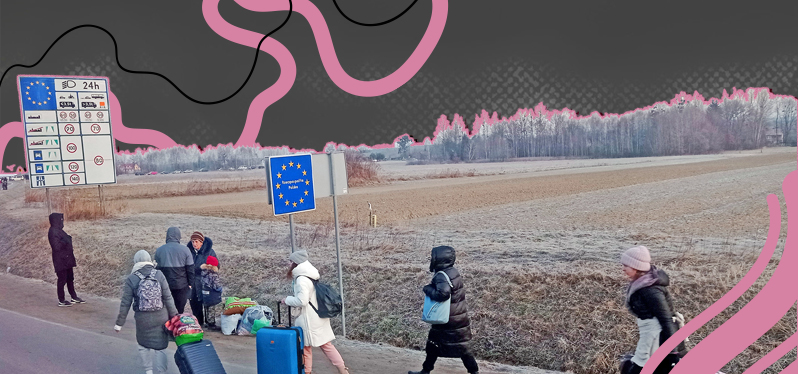
The war between Russia and Ukraine is an example of action that has an environmental and social impact, reinforcing the need for climate justice for the most affected populations and countries. After all, fires in forests, buildings and agricultural fields impact the generation of resources for the population, causing even more reasons for migration beyond conflicts.
Since the war began in February 2022, around 10 million people have been displaced to flee the conflicts. Of this total, 90% were women and girls who were looking for shelter, food, security, stability.
In another context, the Horn of Africa region, which encompasses Kenya, Somalia and Ethiopia, Eritrea, Uganda, Djibouti, Sudan and South Sudan, has suffered from conflicts between agricultural and pastoral communities in search of supplies and water, caused by a extreme crisis of drought and climate change. In the World Migration Report , produced by UN Migration, women and girls make up more than 50% of migrants from the Horn of Africa region .
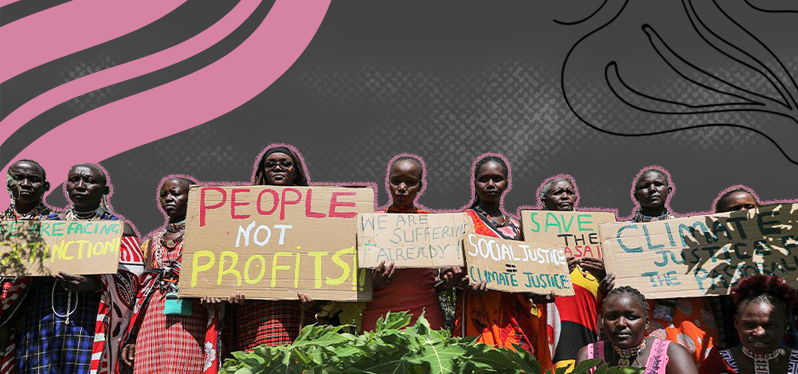
Although they are the least responsible for climate change , the poorest and therefore most vulnerable women and girls suffer most from lack of access to resources. Therefore, climate justice has acted to ensure that those, such as companies and developed countries, who have most exploited and benefited from resource degradation and impacts on the climate are held accountable to create measures and invest to repair and regenerate the damage already caused.
Between 2000 and 2017, more than 6 million people were forced into internal displacement in Brazil, due to natural disasters such as floods, floods and storms, according to data from the Forced Migration Observatory , from the Igarapé Institute.
The displacement caused these people to lose their way of life and migrate in search of new resources to reestablish themselves, whether in large urban centers or in other regions of the country.
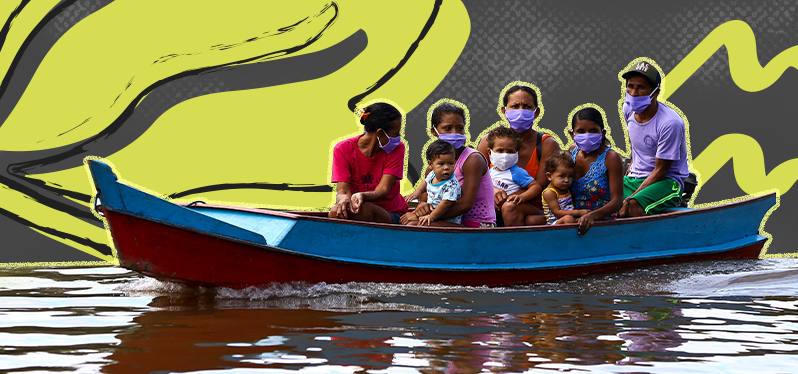
In addition to the inequalities evidenced by the lack of climate justice, Erika Pires Ramos, founder of the South American Network for Environmental Migration (Resama) , points out in the book “ Who needs climate justice in Brazil? ”, that displacements show two aspects of impact: that of migrant women and that of women who become heads of households when their partners migrate. But the subsistence risks are greater for the migrants, after all they are exposed to different types of violence , due to the inequality imposed by the lack of access to education, information and income.
Erika also points out the lack of disaggregated data to analyze, which makes it difficult to work with groups in vulnerable situations, after all, it is necessary to give climate justice a face in order to act based on the needs and demands of each person , including to develop public policies and projects that ensure the rights of populations impacted by climate change, especially women and girls who migrate in search of resources.
And in order to implement public policies, it is necessary to include the people affected, giving greater protagonism to those who work to guarantee climate justice and also to those who need climate justice.
Heavy rains, extreme droughts, rising temperatures, forest fires, among other weather events , are largely caused by climate change that affects society as a whole. However, linked to other factors of inequality, climate change mainly affects the most vulnerable populations , especially women and girls.
They are the majority in Brazil, representing 51.1% of the total population , according to data from the Brazilian Institute of Geography and Statistics (IBGE). Therefore, investing in the work of women and girls on the front lines of the fight against climate change is investing in climate justice and repairing damage and inequalities. This is what the study “ Women’s participation as a facilitator of climate justice ”, by the Mary Robinson Foundation – Climate Justice, shows .
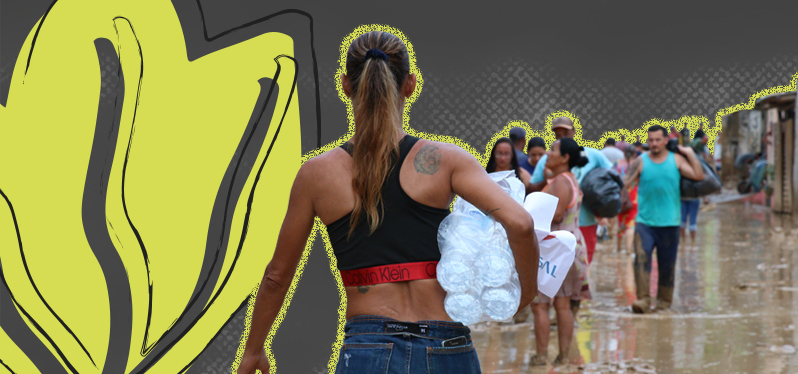
The study points out that this investment can happen from the active participation of women and girls from the planning to the implementation of actions to combat climate change. In addition, including women and girls in leadership positions in communities and governance structures can lead to better conservation and regeneration of resources. After all, their experiences can add a lot to the process of repairing the effects of climate change.
The disproportionate impacts caused by climate change have highlighted the urgency of talking about climate and gender . In addition to inequalities, it is important to talk about women’s role in combating climate change.
In the Amazon, for example, a scenario of accelerated deforestation and periods of extreme drought, women play the role of stewards of domestic and natural resources, acting in the fight against the effects of climate change and against deforestation .
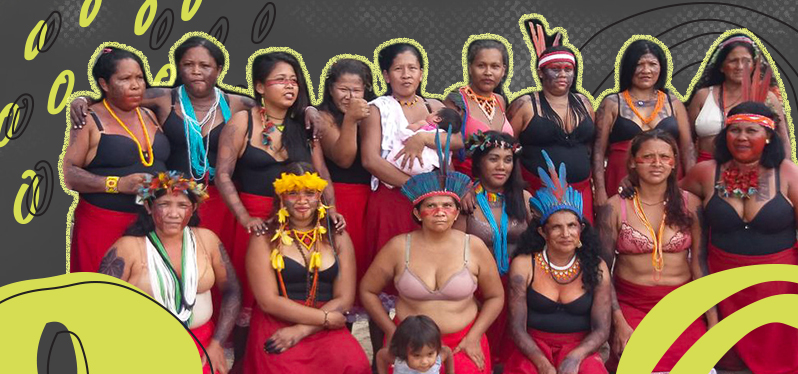
In addition, they act actively in the care of the territory, with initiatives to prevent the activities of miners and loggers. The actions of Guerreiras da Floresta – a group of indigenous women from the Guajajara people who seek to preserve the forest for their sons, daughters and future generations – have gained notoriety in this regard.
The Rio Mangaraí Pilot Project , conducted by Synergia last year, had a line of action for the female empowerment of women in the region, helping in their active participation in community development and local restructuring . It is important to point out that the project’s area of operation comprised the territory of Santa Leopoldina (ES), in the Mangaraí River Basin , where erosion has accumulated sediments and affected the functioning of the Carapina Water Treatment Station.
To encourage the participation of women, the project focused on holding closer conversations, activities such as the exchange of knowledge , development of business plans , fundraising projects and exchanges with women producers from other river basins.
Paula Raquel, Synergia’s project coordinator , points out that for the economic, social and environmental growth of the region, it is very important to awaken women to understand their roles and autonomy : “They, as the main responsible for managing the daily , sons and daughters, the food planted and harvested, have the power to leverage the community , but they also need to be in a decision-making position”, he comments.
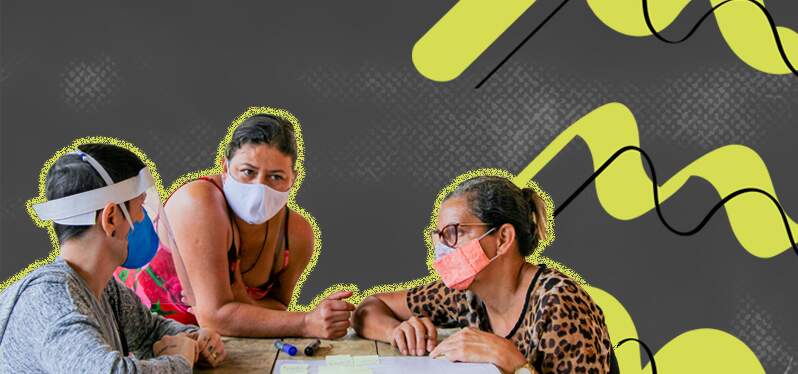
Another climatic event, known by many Brazilian families, is the advance of the sea . It has affected the lives of residents on the coast, whose homes and businesses have been affected by destruction and/or deterioration. This is the case of the municipality of Itapoá (SC), which has suffered in recent years from rising waters, a threat to the way of life of local families.
In Itapoá, the Geração Program , carried out by the company Porto Itapoá and conducted by Synergia, aimed to encourage and support economic and solidary entrepreneurship . Of the 15 local businesses, 14 were run by women, including bakers and artisans. The program enabled the restructuring of women in an area so affected by climate change.
The collective development worked on in the program, especially for women who are historically and socially marginalized, makes room for the conservation of culture and the region. In addition, the program allowed an increase in family income by 21%.
The participation of women in the process of development and restructuring of territories in the midst of climate impacts , opens up even more space for the debate on the participation of women and girls in combat actions. However, for this, it is necessary that they have access to quality education and opportunities .
In the article “ How to save the world: educating girls for climate leadership ”, Renata Koch, Director of EmpoderaClima , reinforces that girls with access to education are agents capable of defending sustainable development. In addition, technical knowledge can make women and girls climate leaders .
She also points out that the more investment in girls’ education, the better they will be able to deal with climate injustices . This strengthens proposals and idealizations for the benefit of female empowerment in the face of climate change.
Climate change has already caused several impacts on the environment and on the lives of populations, especially women and girls in the poorest countries. And, feeling the effects of climate change on a daily basis, they have found solutions to repair their territories, helping in the development of communities.
In the same way, the economics of repair addresses the need to repair the damage and losses caused to the environment before it is too late. At COP27 , rich countries reached an agreement to finance losses and damage caused by climate change in the most vulnerable countries .
This allows the poorest countries to work towards remediation and reduce the impacts that affect women, girls and other minority groups, that is, those who most need climate justice .
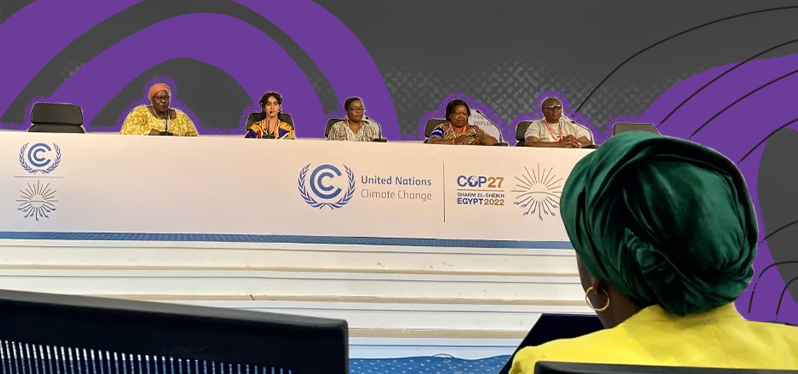
While the COP27 agreement awaits adjustments so that funding can begin , private sector companies and civil society take the lead and take on the role of repairing their territories based on access to work, income, professional training, among others. other civil rights.
This is the case of the residents of Altamira (PA), who play an important role, as Andrea Castro , Synergia’s social development analyst , tells us, who over the years have assumed leadership positions , seeking more information, actively participating in meetings and debates and pointing out what is important for the development of their communities . As a resident of the region, Andrea reinforces: “It is a privilege to continue what our ancestors started ”.
As a way of repairing and regenerating their communities, women have acted through rural production, craft work , politics, among other forms of participation. With this, territories can become more egalitarian, prosperous and safe .
Based on these actions, they impact on local regeneration, generating income , seeking training and developing new skills , so that, together, they can contribute to the development of the region.
An example of this is the work carried out in Barcarena (PA) , where the Travessia Barcarena project , conducted by Synergia, helped approximately 120 local women generate income from the manufacture of face protection masks – distributed free of charge to the most vulnerable population, during the covid-19 pandemic.
Miriam Armelin, project manager at Synergia , points out that the project made it possible for women to work from home, respecting the distance and, above all, allowing them to improve in sewing to generate income and better living conditions.
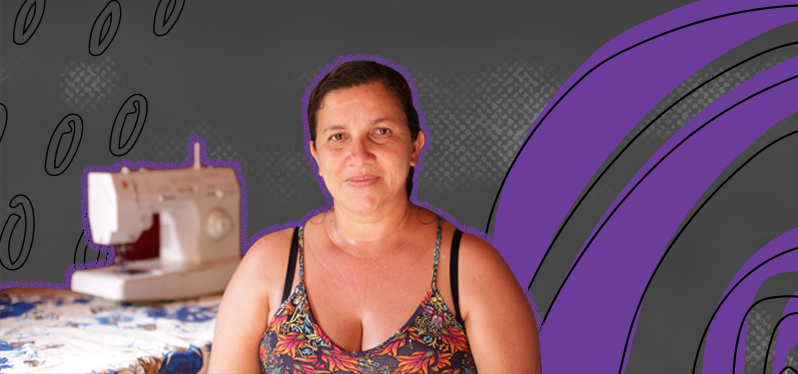
For this, women in the region received sewing tips, an entrepreneurship course , training in management tools , digital training, among other skills, which allowed them to create new perspectives .
Miriam comments that the possibility of transformation and improvement is what motivates women to seek solutions: “They have a very great capacity for transformation. They are always available for training, to work collaboratively and collectively , and this generates new paths, new alternatives ”, she adds.
The project unfolded into Estilo Travessia , aimed at tailoring and haute couture. For this, the participating women developed pieces for a fashion show that showed the power of local sewing and the willingness of these women to contribute to their families and the region.
Maria Oliveira, seamstress of the Travessia Barcarena project , reinforces how the project has strengthened the women of the region: “It was a chance to wake up , to create strength to fight for me and my mother”, she comments. Maria also says that, with what she learned from the course, she has already produced covers for companies in the region.
Even seeking transformations, women are the most affected by inequality in the labor market , which impacts on their actions. According to the Brazilian Institute of Statistics and Geography (IBGE), in the 4th quarter of 2022, the unemployment rate was 9.8% for women , while for men, the rate was 6.5%.
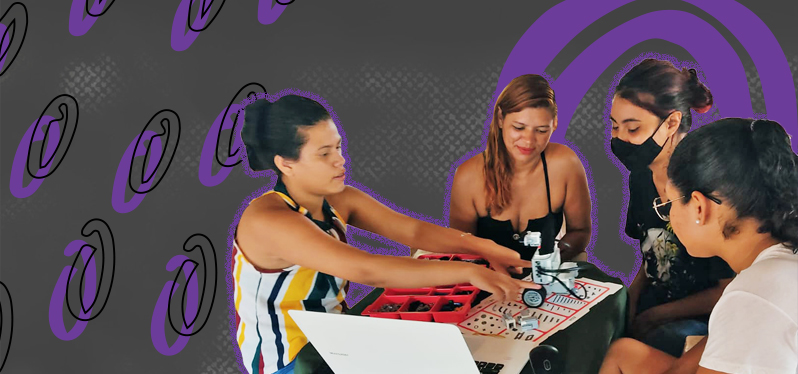
To reduce these numbers and the inequalities that are aggravated by unemployment, the Todos pelo Trabalho program , which invests in professional training , seeks to act through training paths to prepare the population for the job market. Among the directions, there is an exclusive one for the insertion of women .
With the right training and tools, they have the possibility of contributing to the repair of territories, through local work and the economic movement resulting from this work, in addition to many other ways.
That is why it is so important to encourage women and girls’ access to education, the job market, decent housing and other factors that promote equality, so that they can act as agents of transformation in their communities and surroundings.
Family farming is one of the main sources of food in the world, and women also play a fundamental role here. According to data released in 2021 by the UN Food and Agriculture Organization (FAO), small farms produce, on average, 35% of the world’s food . But in Brazil, this number does not reach 10% .
This modality is made up of small rural producers , traditional peoples and communities, agrarian reform settlers, foresters, aquaculturists, extractivists and fishermen.
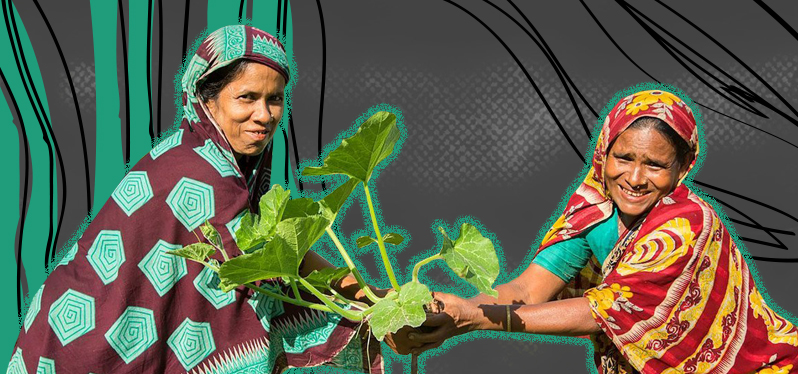
Considering only developing countries, the agricultural workforce is made up of 40% women. In Latin America, this proportion decreases to 20% , while it can reach 50% or more in parts of Africa and Asia . The UN relates this variation in proportion to the lack of access to land , lack of credit and training.
Among the agricultural productions in Brazil, the number of women producers in front of rural properties is expressive , even lower in comparison with men. According to the 2017 Agricultural Census , released by the IBGE, they represent 19% of those responsible for rural establishments , that is, 947 thousand of the total of 5.07 million establishments.
According to FAO, the participation of women in agriculture can increase productivity and agricultural production, enabling social well-being, economic growth and food security .
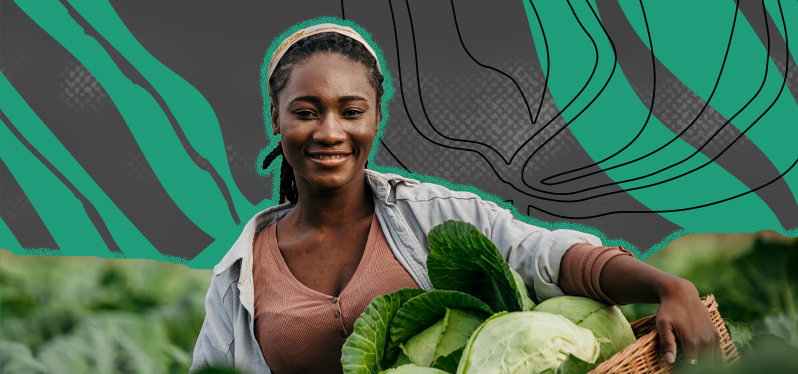
The Organization also highlights a point that reveals the importance of equity: “the reduction of inequality between men and women in access to productive resources and agricultural inputs could reduce between 100 million and 150 million the number of hungry people in the world ”.
That is, the participation of women in the agricultural environment is of great value, and the possibility for them to assume spaces – with equal rights and opportunities – is important for society as a whole, not just for the women themselves.
To encourage female participation and contribute to their businesses, public policies such as the Food Acquisition Program (PAA) and the National School Feeding Program (PNAE) have rural development strategies for family farming.
Currently, 30% of the amount passed on by the programs must be invested in the purchase of products from family farming , stimulating economic and sustainable development. Women represent 80% of the suppliers of products for the PAA.
In addition, in the PAA, a minimum participation of 40% of women as beneficiary suppliers in the Purchase with Simultaneous Donation (CDS) modality was declared – where products purchased from producers are donated to people with food insecurity – and 30 % in the Formation of Stock (CPR – Stock), support to family farmers in the marketing of products to guarantee the price and income of the producer.
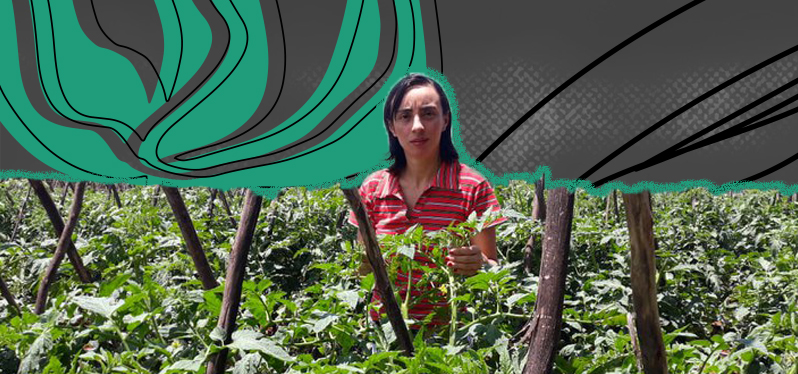
The expansion of female activities based on agriculture also has a direct impact on local economic development . In Cafundão, Mariana (MG), women linked to the activities of the Cafundão Agricultural Cooperation Association began to cultivate vegetables in agroecological gardens, whose production is sold to the local city hall to supply school lunches for the public school network, through the National Program of School Meals (PNAE).
Synergia has collaborated with the construction of an industrial kitchen for women in the region. Their objective is to produce and sell sweets and products from agroecological family farming , made from traditional recipes and developed with local resources. The women will have technical support and training, allowing them to generate income from the sale of products.
In addition to working in agriculture, women use food to develop and sell products that generate income for their families, including buying raw materials from other families, promoting a circular economy .
This is how it is done in Conceição do Mato Dentro , where the famous greengrocers invest in their businesses through the combination of agriculture and gastronomy and contribute to the development of other families, in addition to boosting local tourism.
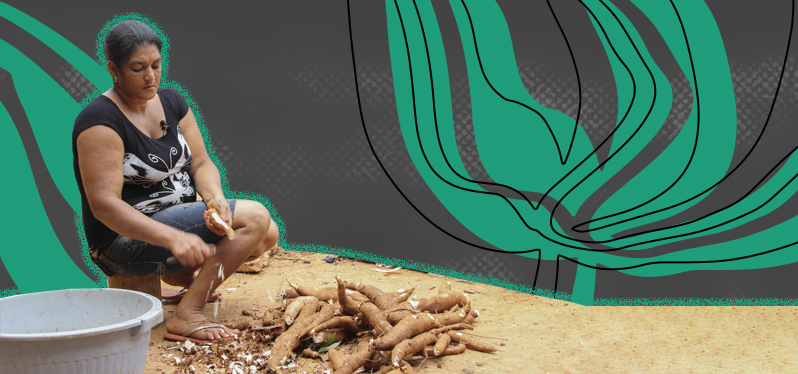
In a productive restructuring project carried out by Synergia, some greengrocers in the region received technical support , through professional training , improvements in conditions and help in ways of producing.
The participation of women in the region is seen as fundamental, says Gustavo Nápoles, project manager at Synergia : “They are the basis of the local economy. From the organization and strengthening of groups , they generated income, contributed to tourism and, above all, developed their occupational role and a welcoming space between them ”, he comments.
Closing the actions of the Synergia 2023 Women’s Month campaign, on March 30th, we held the Live “Climate Justice for Them”!
Click on the video and check out the full Live!
We invited three very special women to share their experiences and perspectives on how climate change hits girls and women hardest – and the importance of climate justice in mitigating this problem.
Meet the guests of the Live “Climate Justice for Them”:
Jéssica Maes: Reporter for the Environment section at Folha de São Paulo and Live mediator.
Gabriela Goulart: MSc in Biodiversity Conservation and Sustainable Development and specialist in Socio-Environmental Management at Synergia.
Joci Aguiar: Economist, ecofeminist and environmentalist. Member of the Gender and Climate WG of the Climate Observatory.
Check out all the publications of the Synergia 2023 Women’s Month – “Climate Justice for Them” also on Synergia Socioambiental’s Instagram and LinkedIn .